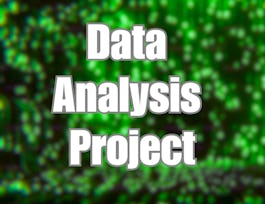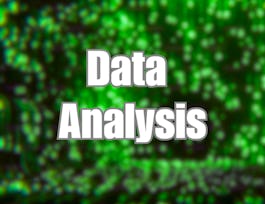The "Clustering Analysis" course introduces students to the fundamental concepts of unsupervised learning, focusing on clustering and dimension reduction techniques. Participants will explore various clustering methods, including partitioning, hierarchical, density-based, and grid-based clustering. Additionally, students will learn about Principal Component Analysis (PCA) for dimension reduction. Through interactive tutorials and practical case studies, students will gain hands-on experience in applying clustering and dimension reduction techniques to diverse datasets.


Clustering Analysis
This course is part of Data Analysis with Python Specialization
Taught in English

Instructor: Di Wu
Included with 
Course
Recommended experience
What you'll learn
Understand the principles and significance of unsupervised learning, particularly clustering and dimension reduction.
Apply clustering techniques to diverse datasets for pattern discovery and data exploration.
Implement Principal Component Analysis (PCA) for dimension reduction and interpret the reduced feature space.
Skills you'll gain
Details to know

Add to your LinkedIn profile
5 quizzes, 1 assignment
Course
Recommended experience
See how employees at top companies are mastering in-demand skills

Build your subject-matter expertise
- Learn new concepts from industry experts
- Gain a foundational understanding of a subject or tool
- Develop job-relevant skills with hands-on projects
- Earn a shareable career certificate


Earn a career certificate
Add this credential to your LinkedIn profile, resume, or CV
Share it on social media and in your performance review

There are 6 modules in this course
This week provides an introduction to unsupervised learning and clustering analysis. You will delve into partitioning clustering methods, such as K-Means and K-Medoids, understanding their principles and applications.
What's included
2 videos5 readings1 quiz1 discussion prompt
This week you will explore hierarchical clustering, a method that creates a tree-like structure to represent data similarities.
What's included
1 video3 readings1 quiz1 discussion prompt
This week focuses on density-based clustering, which groups data points based on their density within the dataset.
What's included
1 video3 readings1 quiz1 discussion prompt
Throughout this week, you will explore grid-based clustering, an approach that partitions the data space into grids for efficient clustering.
What's included
1 video2 readings1 quiz1 discussion prompt
This week introduces dimension reduction techniques as a critical preprocessing step for handling high-dimensional data.
What's included
1 video3 readings1 quiz1 discussion prompt
The final week focuses on a comprehensive case study where you will apply clustering and dimension reduction techniques to solve a real-world problem.
What's included
1 reading1 assignment1 discussion prompt
Instructor

Offered by
Recommended if you're interested in Data Analysis

University of Colorado Boulder

University of Colorado Boulder

Google Cloud

University of Colorado Boulder
Why people choose Coursera for their career




New to Data Analysis? Start here.

Open new doors with Coursera Plus
Unlimited access to 7,000+ world-class courses, hands-on projects, and job-ready certificate programs - all included in your subscription
Advance your career with an online degree
Earn a degree from world-class universities - 100% online
Join over 3,400 global companies that choose Coursera for Business
Upskill your employees to excel in the digital economy
Frequently asked questions
Access to lectures and assignments depends on your type of enrollment. If you take a course in audit mode, you will be able to see most course materials for free. To access graded assignments and to earn a Certificate, you will need to purchase the Certificate experience, during or after your audit. If you don't see the audit option:
The course may not offer an audit option. You can try a Free Trial instead, or apply for Financial Aid.
The course may offer 'Full Course, No Certificate' instead. This option lets you see all course materials, submit required assessments, and get a final grade. This also means that you will not be able to purchase a Certificate experience.
When you enroll in the course, you get access to all of the courses in the Specialization, and you earn a certificate when you complete the work. Your electronic Certificate will be added to your Accomplishments page - from there, you can print your Certificate or add it to your LinkedIn profile. If you only want to read and view the course content, you can audit the course for free.
If you subscribed, you get a 7-day free trial during which you can cancel at no penalty. After that, we don’t give refunds, but you can cancel your subscription at any time. See our full refund policy.

